Ballistic and Operational Protection
Armor, Vests and Ballistic Plates
We call armor the technology used to provide protection for people and objects against gunfire. Initially, such technology was created for combat in war camps, but due to innovations, it soon began to be employed in urban centers by Police Forces. The evolution continued and today it is possible for civilians to use this technology to protect their motor vehicles, for example.
Ballistic vests, more commonly known as bulletproof vests, are personal equipment that help absorb the impact and reduce or prevent the penetration into the body of firearms projectiles and shrapnel from explosions. They can be soft or rigid. Soft vests are constructed of many layers of woven or laminated fibers and protect the wearer from gunfire from revolvers, pistols, and small-caliber rifles, and from small fragments of explosives such as hand grenades.
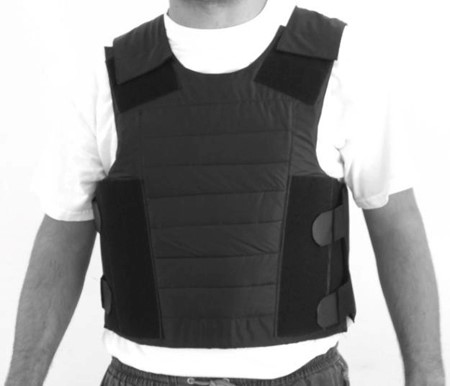
Despite their lower protection, these vests are lighter and more comfortable and are typically worn by members of public or private security forces, citizens under threat, and bodyguards. Rigid vests generally consist of a ballistic plate inserted into a garment called a plate holder. These rigid ballistic plates can be made of metal, ceramic, or, more recently, high molecular weight polymers. They feature higher protection capability, including larger caliber pistols, rifles, and light machine guns. Heavier and more uncomfortable, they are mainly worn by military personnel, police tactical units, and rescue teams. Heavy-duty vests may include side and shoulder protection plates. Those employed by explosives deactivation teams, in addition to offering greater resistance, include helmets and ballistic visors, as well as protection for the spine.
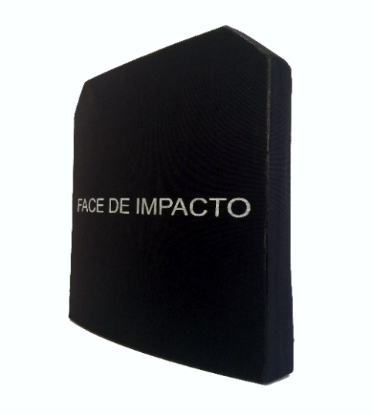
Ballistic vests work by trapping the projectile's advance through its many layers of tough fibers, and dissipating its kinetic energy in an increasing circular form through a larger portion of the vest's fibers. The vest absorbs the energy of the deforming bullet, stopping it before it can fully penetrate the tissue. Depending on the caliber, shape and velocity of the projectile a greater or lesser amount of layers may be penetrated, but as deformation occurs, the energy is absorbed by an increasingly larger fiber area. Always within the maximum capacity for which the vest has been certified. Even without full perforation, higher energy projectiles have sufficient force to cause trauma under the point of impact. The latest certification standards require an anti-trauma layer in the part of the vest facing the individual that deforms and absorbs the remaining energy to limit the impact force transmitted to the body and the consequent trauma. This deformation must be within the limits established by the certifying standard adopted by manufacturers of bullet proof vests and ballistic vests.
Os coletes balísticos desenhados para proteção contra munição de arma de fogo oferecem menor proteção contra golpes de instrumentos cortantes, como facas, flechas e estoques ou, ainda, contra projetis fabricados com materiais endurecidos, como as que contêm núcleo de aço em vez de chumbo. Isso ocorre porque a força de impacto desses objetos permanece concentrada em uma área relativamente pequena, havendo uma maior probabilidade de perfurar as camadas de fibra da maioria dos tecidos resistentes a balas usados em coletes macios. Por outro lado, coletes à prova de facas fornecem melhor proteção contra instrumentos cortantes, mas geralmente são menos eficazes contra balas.
Ballistic vests designed for protection against firearm ammunition offer less protection against blows from sharp instruments such as knives, arrows, and stocks, or from projectiles made from hardened materials such as those containing a steel core instead of lead. This is because the impact force of these objects is concentrated in a relatively small area and is more likely to pierce the fiber layers of most bullet-resistant fabrics used in soft vests. On the other hand, knife-proof vests provide better protection against sharp instruments, but are generally less effective against bullets. Textile vests can be conjugated and reinforced with metal (steel or titanium), ceramic, or polyethylene plates that provide additional protection to vital areas. These rigid armor plates have proven effective against bullets from handguns and a variety of rifles. These improved ballistic vests have become standard in military use, as soft vests are ineffective for military activity. Prison guards and police officers often wear vests specifically designed against bladed weapons and sharp objects.
Desde a década de 1970, várias fibras e métodos de construção de tecidos balísticos foram desenvolvidos. Além do Kevlar da Du Pont, existe o Dyneema da DSM, o Gold Flex e o Spectra da Honeywell, o Twaron de Teijin Aramid, o Dragon Skin da Pinnacle Armor e o Zylon da Toyobo.
In Brazil, the Brazilian Army controls the manufacture and use of armor, plates, and ballistic vests. The commercialization is controlled by the Public Security Secretariats of each state. According to the Ordinance No. 18 - D LOG, from December 19th, 2006, from the Brazilian Army, all citizens older than 21 years of age, with a fixed residence, without criminal record, and with a lawful remunerated occupation can own a ballistic vest within the allowed levels of protection. To make the purchase, it is necessary to look for a store authorized to sell the product and request authorization from the Department of Controlled Products in your state of residence, linked to the Secretariat of Public Security (SSP). The procedures for purchase vary from state to state, as each SSP may adopt its own procedures. No vest or ballistic plate can be sold in Brazil without being certified by the controlling body, in this case the Brazilian Army, which uses, as a reference standard, the NIJ0101.04. The table below shows the classification of vests and ballistic plates, according to the levels of protection offered.
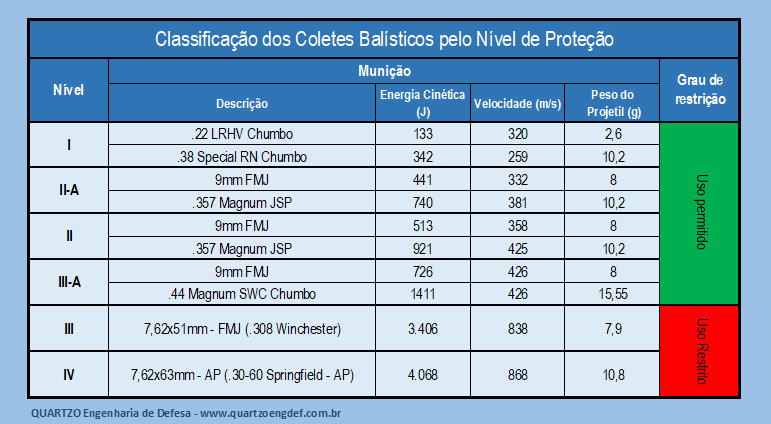
Armor in Civil Vehicles
For the armoring of civilian vehicles, it is necessary to install aramid plates attached with glue from the inside of the vehicle body. Eventually, at some points, steel plates are installed, fixed by means of clamps or screws. Between the ballistic material and the original bodywork, adhesive is applied, usually in polyurethane, to prevent the material from sliding and make the assembly quieter. The levels of armor and authorization for use are the same as for the production and use of ballistic vests.
The following steps are taken to armor a vehicle:
- Disassembly and protection of the car;
- Individual storage of mechanical parts;
- Armoring of the columns;
- Body overlay; and
- Armoring of the doors, roof, tires, floor and hood, battery, and windows (for the vehicle structure, 304L steel is used (as indicated by ABNT's NBR 15000 standard). The glass is composed of glass sheets interspersed with polycarbonate and polyurethane).
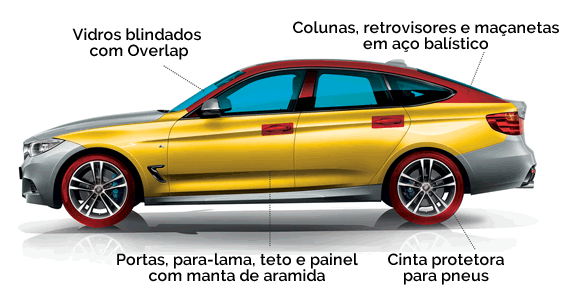
Armoring of Military Vehicles
According to the levels of armor already mentioned, it is possible to armor military and police vehicles for land, sea and air use. The aircraft can receive both fixed plates, which require that the installation project be approved by the certifying aeronautical authority, ANAC, in the case of Brazil, and removable plates, which, besides dispensing with the certification of the controlling agency, allows for greater flexibility and logistical optimization of the existing inventory, since they can be quickly removed from an aircraft that may be unavailable and installed in another that is available for operation.
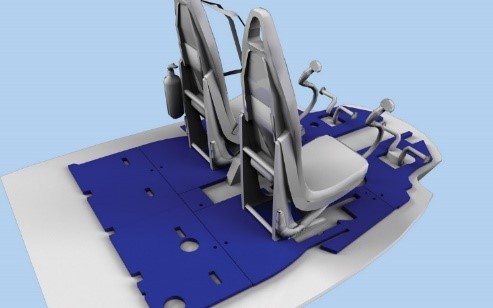
Since then, this type of vehicle has been widely used by police forces in most countries around the world to confront heavily armed criminals, who could inflict serious injuries on the combat troops and unacceptable losses on the police forces, if it were not for the armor of their tactical vehicles.
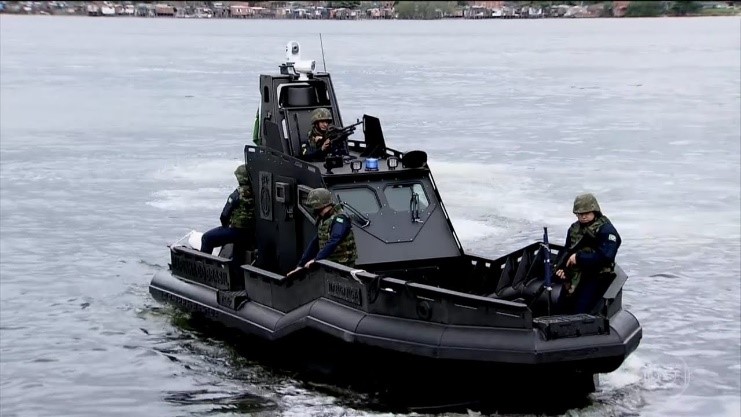
Special armor can be applied to police or military motorboats in order to protect them and their crew members from enemy fire, during tactical operations or patrolling the country's lakeside or coastal areas.
Armored vehicles used for tactical incursions into areas with high crime rates and narcotics sales were first used in South Africa between 1948 and 1994.
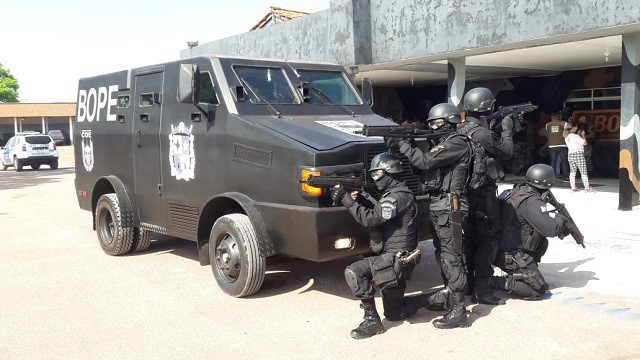
Tactical Armored Equipment
Tactical armored equipment is essential in situations where confronting heavily armed criminals becomes an operational routine. Among them, besides the vests and ballistic plates mentioned above, we have helmets, shields, and personal protection goggles. This equipment aims to provide the police officer or soldier with greater operational security without prohibitively hindering the rapid movement of the combatant, especially in extreme situations.
Helmets, which have been widely used since the early medieval wars, when given ballistic protection, introduce a higher level of security to the combatant, and are used by both military and police forces. Tactical ballistic shields protect police officers during raids, riot control, and retaking control of prisons, vacating civilian and government property and facilities. Ballistic goggles, while not providing protection against direct penetration by firearm projectiles, do protect the wearer against the shrapnel that can result from enemy or individual gunfire, and even in firearms training exercises.
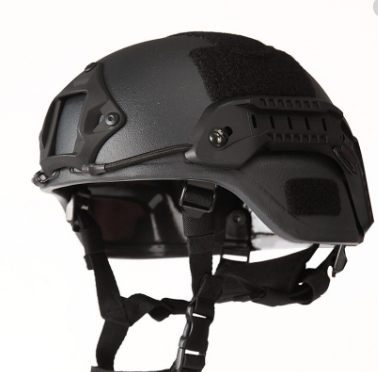
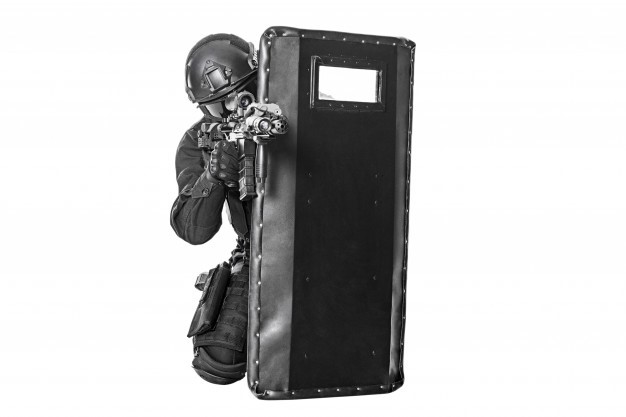
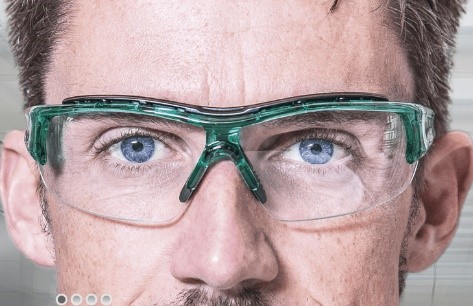
QUARTZO Defense Engineering produces, in São José do Campos, its own soft vests and rigid ballistic plates, using the most modern and lightest raw materials in the international market, such as high molecular weight polyethylene. Always in full compliance with the standards in force in the country, the QUARTZO vests and plates are formally certified by the NIJ0101.04 standard, which is the standard adopted by the Brazilian Army's Controlled Products Inspection Board for the certification of ballistic products in the national territory. Although certified by the above standard, our products are also tested and approved according to standard NIJ0101.06, which is more modern and in force in the United States of America. QUARTZO ballistic vests and plates can be exported to all South America and other countries in the world. It also manufactures special ballistic plates for armoring military and land police vehicles, speedboats and aircrafts. For the latter, we developed removable plates that allow greater flexibility and logistic optimization, as they can be quickly removed from an eventually unavailable aircraft and installed in another that is available.
QUARTZO Defense Engineering also commercializes the following ballistic protection equipment, manufactured by internationally renowned partners: ballistic helmets for use by land and airborne forces, which may have a chin guard and ballistic visor, goggles with ballistic protection against shrapnel for sport shooters or elite shooters, and ballistic shields with or without a visor. Always with international certification. Contact us and get to know our product line for collective or individual ballistic protection. We will be pleased to meet your needs in this segment.
Costumes and Accessories for Disorder Control
Disorder control measures are employed by specialized police, military, or security troops to control, disperse, or restrain persons involved in riots, demonstrations, or protests. Although these groups do not normally use firearms, they can use sharp or blunt objects against the controlling troops. Because of this weaponry, these troops must wear clothing and accessories that protect them adequately and sufficiently, without, however, hindering their mobility or operational performance. Such clothing and accessories must not injure the members of the groups being controlled, but only contribute to riot control measures.
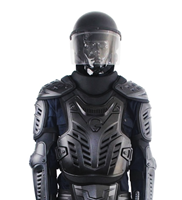
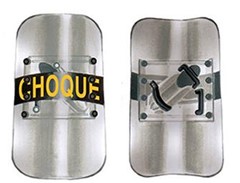
Since there is no need for ballistic protection, operational protective equipment can be lighter, more comfortable, and economical. They must not impair the wearer's operability, however, they must ensure adequate strength to protect him against injuries caused by sharp objects and against the impact of blunt objects that can be thrown at him, including incendiary craft bombs (Molotov cocktails). Its use is provided for in the doctrine of the "progressive use of force," where force is to be used only when indispensable and at the minimum intensity necessary to immediately cease hostilities.
This classification of equipment and technology is strongly recommended and supported by the UN, always aiming at the preservation of lives. If the police forces had only lethal firearms at their disposal, the containment of any demonstration or more violent riot would only be achieved with serious or lethal injuries, which is absolutely undesirable. When it comes to these operations with a focus on society, such as urban confrontation situations, demonstrations or civil disorder, it is necessary for authorized agents to wear special clothing and PPE. These military tactical suits, equipment and accessories, classified as "anti-riot", are of the non-ballistic type and prioritize mobility, resistance to bad weather, fire and impact to the user.
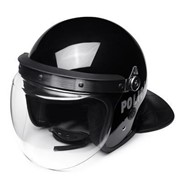
QUARTZO Defense Engineering works only with equipment and materials of high quality and resistance, tested and approved according to international certification standards, in order to ensure adequate protection to its user and the least risk to the opponent. Our main commitment is with the integrity and protection of the urban agents.
Operational Protection Equipment
QUARTZO, with its board of directors formed by reserve military officers and engineers specialized in product quality control, is always searching for the best partnerships in order to offer the most modern solutions available in the international market for the protection of public agents in their daily and specific operational activities. The use of modern suits, military equipment, and tactical accessories, besides protecting the life of the public agent, reducing the high costs with sick leave, leave of absence, and health and recovery treatments, greatly increases their operational efficiency, greatly reducing the time needed to accomplish their mission and reach their objective, which, by itself, already reduces the associated risk by reducing exposure, and increasing the efficiency and effectiveness of the tactics employed. We cannot forget the aesthetic aspects, since an impeccable presentation and complete outfit of the public agent, added to a correct posture, greatly contribute to the development of moral respect, which, without a doubt, already acts as a dissuasion factor.
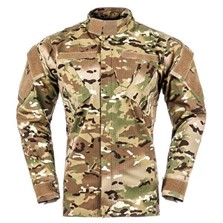
Ergonomics is equally important in that comfort in the use of the equipment, especially under extreme operational conditions or prolonged employment, is fundamental to the health of the military and the public security professional. It is also important to guarantee perfect integration between the set of equipment, so that the use or employment of one accessory does not impede or hinder the use of another.
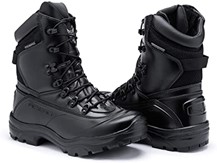
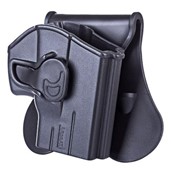
Besides vests and items for individual protection, such as helmets, exoskeletons, shields, gloves, boots, and boots and boots, other accessories and operational equipment are necessary for the adequate fulfillment of the work routine of the public security professional, such as special highly resistant clothing, tactical belts, body cameras (bodycams) tactical knives, holsters and magazine holders, canteens, among others. To be used in their operational routine, whether in police patrols, rescue actions, raids and areas of high risk of being shot, in direct confrontation with criminals or in special operations.
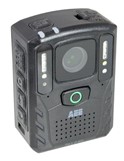
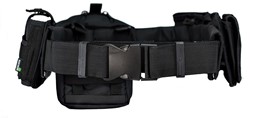
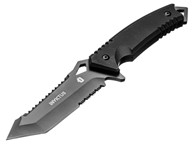
Explosive Ordnance Disposal Suits and Equipment
Explosives are devices that cause intense damage through the rapid transformation and expansion of gases and the consequent dissemination of strong shock waves. They are used by criminals in robberies to destroy obstacles (walls, barriers, safes, ATM machines) or to impede or delay the action of law enforcement officers. They can also be used for other equally criminal purposes such as planned assassinations or collective terrorist actions, among others. In any of these scenarios, where there is a suspicion of the presence of an explosive device or bomb, no action should be taken by those present other than evacuating the scene and calling the nearest specialized explosives disarming unit. Usually known as a bomb squad, they are activated whenever there is a suspected explosive device to investigate, disarm, transport to a secure location and destroy or set off the device in a confined compartment and controlled conditions.
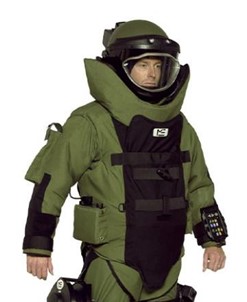
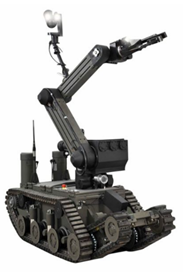
Explosive Ordnance Handling techniques aim to ensure the safe location, identification, recovery and disposal of explosives, such as ordnance, chemical, biological, nuclear and pyrotechnic materials. In the military universe, EOD professionals are responsible for preventing explosions of catastrophic proportions and effects, both in war and terrorist scenarios. Since the end of the Vietnam War, the changing world situation and increased operational tasks have led to the expansion of EOD units in number, size and capability. Their record in recent history includes the Gulf War, where EOD technicians disarmed more than 500 naval mines. EOD was the critical element in eliminating unexploded ordnance from the USS Stark (FFG-31) after two Exocet anti-ship missiles fired from an Iraqi aircraft hit it. During joint operations in Somalia, Haiti, Bosnia, and Kosovo, the performance of EOD teams provided security and operational continuity by eliminating booby traps, weapons caches, and conducting mine clearance operations, providing a broad strategic advantage to the platoons involved.
We can divide products designed to meet EOD demands into three categories: suppressors, suits and operational reconnaissance and neutralization robots.
Suppressors - are devices and equipment whose function is to totally or partially suppress some aspect of the explosion, be it smoke, shock wave, or shrapnel. The Total Containment Vessel (TCV) is composed of a large spherical metal tank, normally made of carbon steel with walls 35mm thick or thicker. They are used for transportation or even to absorb the explosion.
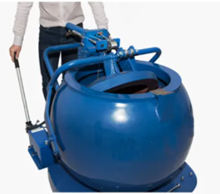
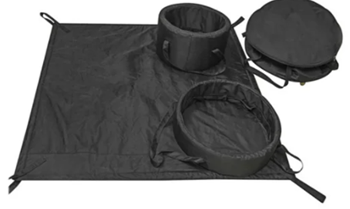
Bomb Blanket - practical, efficient and easy to transport, they are arranged over the practical and efficient explosive artifact. They are capable of containing the smoke and most of the shrapnel resulting from an explosion. The kit usually consists of two insulation rings and a blanket, all composed of several layers of high molecular weight polyethylene fiber; the same used for the manufacture of ballistic plates.
Suits - the bomb protection suits were developed to preserve the physical integrity of their occupants, seeking to avoid restrictions on movement and agility. They are designed to reduce the consequences of an unwanted triggering or unexpected explosion on the specialized agent. Made of anti-ballistic fabric, it is malleable, relatively light, and extremely resistant to shrapnel and to flames and high temperatures resulting from the explosion, which can exceed 3000° Celsius. Ballistic plates are usually added to its front to increase the shrapnel protection capability for the wearer's vital organs, and offer high puncture resistance during explosions. Their helmet allows an extended field of vision and comes with neck twist protectors. The suits normally have a control to command additional lighting features, integrated communication, as well as interior ventilation and an oxygen cylinder, reducing discomfort for the user, even when employed for a prolonged period.
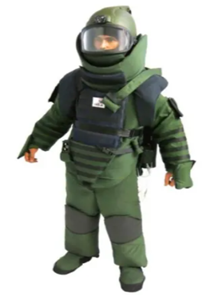
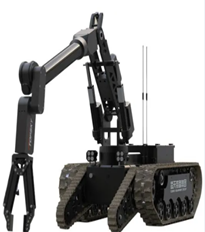
Neutralization and reconnaissance robots - in situations where the authorities are not properly informed about the positioning of explosives and their triggers, the risk of unintentional deflagration may become too high for a team of specialists to do this recognition. For these situations, it is recommended to use operational robots equipped with high-definition cameras, night or thermal, for site recognition and location and recognition of the explosive devices. Also equipped with precise tweezers and a reinforced structure, these robots are versatile and adaptable, capable of opening doors, going up and down stairs, disarming and transporting the device to an external and safer location where the necessary actions can be taken, eliminating the risk of life to which the specialists would be exposed in the absence of this technology.
Considering the most diverse operational employment situations of the public security agent, QUARTZO Defense Engineering made available a set of specialized equipment, of high quality and always associated to the state of the art, capable of meeting the most rigorous needs of the public security troops.
